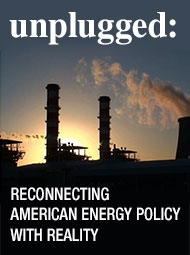TodayŌĆÖs PACE Blog is an abridged version of a PACE column published yesterday by Morning Consult.
When it comes to ensuring a resilient energy grid capable of serving American customers no matter what comes our way, there are few things more vital than safeguarding the security of our energy and electricity delivery systems.
Despite cybersecurity being front and center across the energy and electricity value chain for years, the Department of Energy (DOE) recently asserted that pipeline operators in the U.S. are not adequately prepared for cyber-attacks and that natural gas pipelines specifically are ŌĆ£increasingly vulnerable to cyber- and physical attacks.’┐Į?
ItŌĆÖs true that cyber threats are real and that constant defense and vigilance is required. However, when it comes to cyber and physical security, itŌĆÖs critical that government and industry work together, across fuels and organizational charts on a common mission ŌĆō securing the entire energy infrastructure that is the backbone of our way of life.
Having recognized the magnitude of cybersecurity issues for well over a decade, industry and federal partners continue to build a robust defense network and establish a clearinghouse of information and best practices for utilities and infrastructure operators to utilize. Just this year both the Transportation Security Administration and the National Institute of Standards and Technology ŌĆō two key agencies involved in the security of our nationŌĆÖs energy grid ŌĆō released updated versions of their cybersecurity guidelines for pipelines.
Information sharing is a central component of preparedness and response. The Oil and Natural Gas Information Sharing and Analysis Center, created in 2014 as a ŌĆ£dynamic cyber security hub’┐Į? that shares and analyzes threat information. More than 50 companies participate, including a number of the nationŌĆÖs largest natural gas pipeline operators. This intelligence and its use are also being tested in threat simulations like one conducted last year by North American Electric Reliability Corporation (NERC) that included more than 6,000 stakeholders from utilities and government agencies in an exercise to test coordination and response to cyber and armed assaults on energy resources.
With these developments in mind, many were surprised at DOEŌĆÖs statement about pipeline security. The North American Electric Reliability Corporation concluded in its 2018 Summer Reliability Assessment that grid resilience is actually improving, despite new threats. The current approach of cooperation and investment is working, along with awareness that constant vigilance is required to stay prepared.
A combination of federal regulations and market forces have increased the use of natural gas for U.S. energy production. Natural gas is also a key ingredient to climate action, as the use of our nationŌĆÖs abundant natural gas supplies have helped deliver near 30-year lows for carbon dioxide emissions from the electricity sector. ThatŌĆÖs why lawmakers must understand that protecting pipelines from threats is a matter of national security. But thatŌĆÖs also why they must carefully weigh claims about pipeline security and focus instead on creating a culture of information sharing and cooperation across the energy sector and government.





